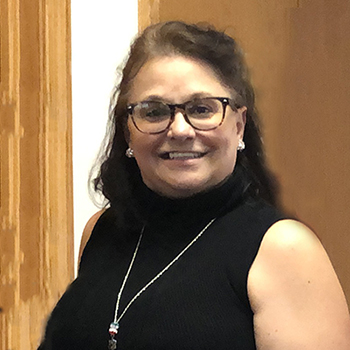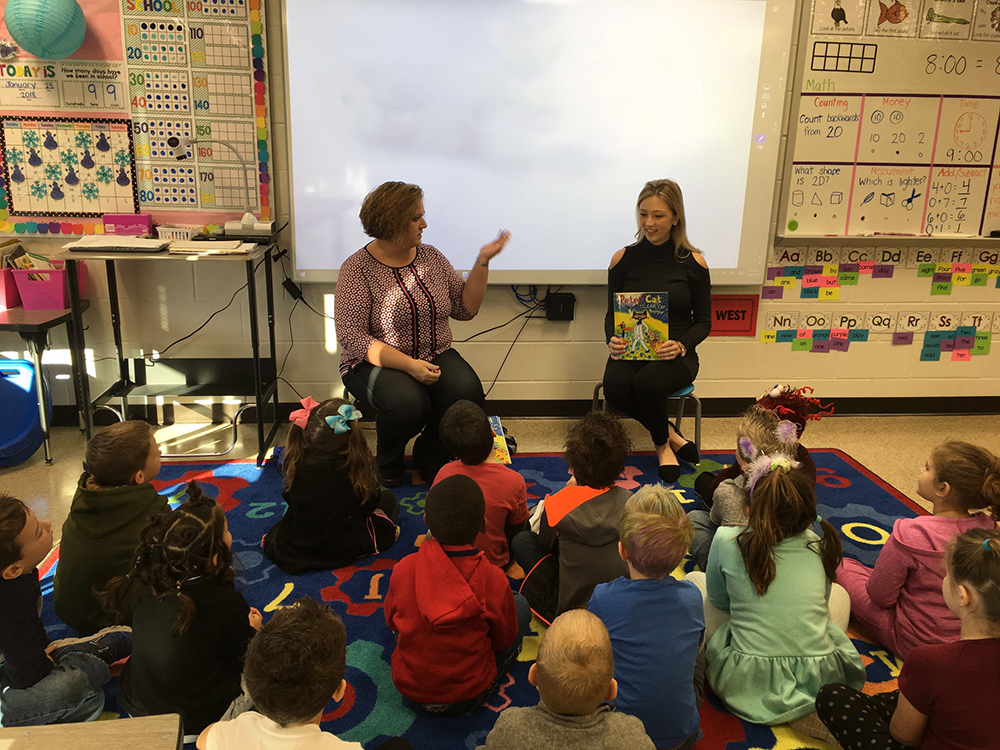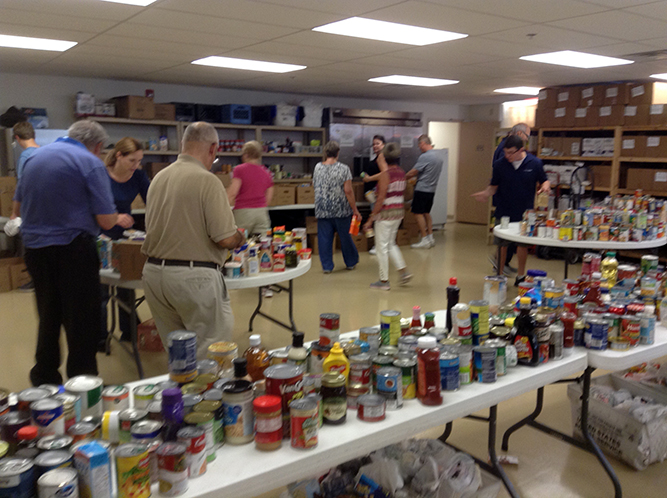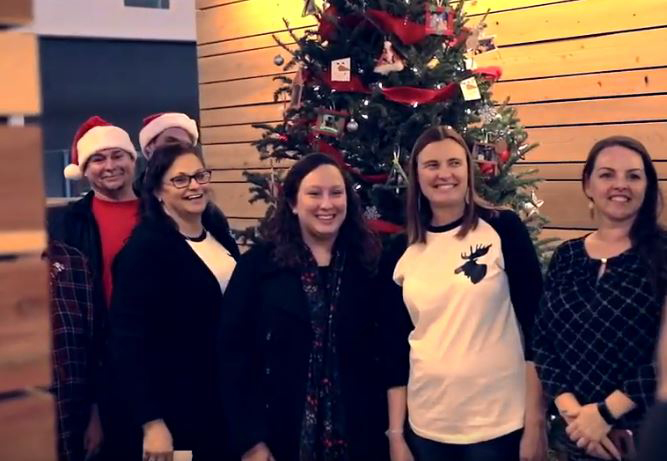Rayonier’s Kim Sartor is the face of our community giving efforts, ensuring we take an active role in doing good for the communities where we live and work, including volunteering, donating blood and making financial donations to important causes.
Ask Kim Sartor’s boss, and he’ll tell you she is the “glue” that connects Rayonier to its communities.
Mike Bell says Kim, Rayonier’s Community Affairs Manager, epitomizes community giving. Her words and behaviors each day reflect how much she cares for her colleagues, Rayonier and the communities where we live and work. In addition to supporting the Public Affairs department, she manages the Rayonier Community Fund, juggling requests and energizing others to volunteer.

Mike, who is Rayonier’s Vice President of Public Affairs and Communications, recognized Kim’s can-do attitude when he asked her to join his team. Her big heart and innate sense of compassion made her the ideal person for the position.
“If I could clone her, I would,” jokes her coworker Dan Roach, director of Public Affairs. “She always responds cheerfully and if she doesn’t know how to do something, she will figure it out and put in the time it takes to get the job done.”
Kim’s typical week consists of overseeing grant applications, working on sponsorship opportunities and managing the Community Fund. Kim forecasts, budgets, screens applications and fields calls about how to spend dollars set aside for community investment. Her talent also includes connecting Rayonier employees’ time, talent and energy with volunteer opportunities that match their strengths. Even outside of the typical work week, Kim often spends her evenings and weekends at company-sponsored events.
Her work spans the United States, from the annual grant breakfast supporting the work of non-profit agencies in the Pacific Northwest to the weekend she spends each year volunteering at the Mail Carriers’ Food Drive in Fernandina Beach, Florida.
“Participation is contagious when Kim is involved,” says Mike. “There is a blood mobile that has been coming to our offices for years. Kim started that!”
Kim’s passion for the blood drive stems from her own experience: a blood transfusion that saved her life years ago. She says Rayonier’s bimonthly blood drives have the potential to save dozens of lives per-year. Kim doesn’t just enlist employees to support the blood drive, she also distributes flyers to neighbors, such as the FSCJ Nassau Campus, Nassau County Courthouse, Nassau County Sheriff’s office and Wildlight Elementary.
Because of Kim, Rayonier volunteers read to elementary students during the school year through the Family Support Services reading program, Doggone Good Readers, which encourages public library usage and reading while improving literacy for children. Kim also attends monthly Board meetings for the Amelia Island Book Festival & Authors in Schools Literacy Program, where she assists with writing and reading workshops for older students.

Kim also oversees a tradition at Rayonier to support the Angel Tree toy drive in which foster children in Nassau County, FL, receive gifts during the holidays when they haven’t traditionally received much.
“Our 150 employees immediately said ‘yes’ to step up and team up to grant wishes for these children during the holidays. Last year we supplied more than 350 gifts for needy children,” Kim says. “All I am is the facilitator. I’m just very honored to be able to do what I do. God has given me a shining light to get people motivated to help others.”
Many school-age children in Nassau County experience food insecurity, not knowing if they will have food on the weekends. Kim organized Rayonier employees to help restock a food pantry and assemble hundreds of nutritious meal packs for children through Barnabas Nassau, a multi-faceted crisis assistance for families. Kim, who grew up in a blended family with 9 children, says, “We could have used programs like Barnabas, but I don’t recall there being services like this when I was young.” Robert Peck, Barnabas’s Food Program Manager, says he appreciates that Rayonier employees not only lend a hand, but show up organized, efficient and won’t leave until the job is done.

While Kim doesn’t dictate where dollars are spent in other locations in the Rayonier footprint, she ensures the money is well-placed, meaningful and directly impactful. “I’m proud to know that the money we’re giving away is staying in the communities where we work and making a difference,” she says.
Employees often see updates from Kim on Rayonier’s internal social network, The Landing. She shares pictures from all over the country of volunteer events to let all employees know what agencies and programs Rayonier supports. Kim works with coworkers to help children through education and youth development programs such as book festivals, literacy, after-school programs, volunteer mentor programs and summer camps. She finds programs that help teachers through conservation training workshops and enhanced educational opportunities in the various states Rayonier is in.
Kim says she learned from her family to follow her passion, and that’s just what her job at Rayonier enables her to do. She loves seeing how that work reflects on those it impacts.
“I’ve seen people cry learning about how invested our company is in their community,” she says. “It’s inspiring and humbling to see our company dollars at work in these communities. There’s such pride in knowing that Rayonier cares.”










Join the Conversation
I have a question about a former Rayonier forest at the Matanzas River. Now the Fort Matanzas National Monument, on the west side of the ICW, there is a large area surrounded by an embankment. At one end is a four part structure of large corrugated pipe halves standing on end connected by a catwalk. So, could you please check into what this basin was used for presumably in the forestry business and what the four half tubes did for the process? Thanks
Hey Dietrich! This area was actually not owned by Rayonier, though we did own land just to the west of it. Our team that works in the area says it was an “island” that was used when the ICW was dredged to stock pile the dredge material. We don’t know what the pipes are for for sure — possibly to move water?